Why Scribe AI Is Transforming Patient Care
Discover how AI scribes like Heidi and Tandem are restoring human connection in medicine.
Why Scribe AI Is Transforming Patient Care—And Why We Must Embrace It Now
By Dr. Sean Brink, GP
As a general practitioner, I’ve spent over a decade sitting face-to-face with patients, listening carefully to their concerns, and attempting to do what doctors are trained to do: diagnose, comfort, and help. But in recent years, I’ve found myself spending more and more time facing a screen instead of a person. The demands of documentation—referrals, symptom histories, safety-netting, coding, care plans—have crept into every corner of my day. And it’s not just me. Across the NHS and globally, we are witnessing unprecedented levels of burnout among clinicians, many citing administrative overload as a key factor.
That’s why I believe we are now at a turning point. A quiet revolution is underway in the form of scribe AI—technology that is fundamentally changing the way we work with patients. Software like Heidi and Tandem isn’t just about saving time. It’s about restoring the human connection at the heart of medicine.
Let me explain.
It’s the first time in years it felt like a doctor really heard me
Patient

Really Listening
One of the biggest misconceptions about artificial intelligence in healthcare is that it will replace the doctor. But in my experience, the opposite is true. When I use scribe AI in consultations, I’m not delegating the care. I’m enhancing it. These tools listen passively as the patient and I speak. They transcribe, contextualise, and interpret our conversation in real time—accurately capturing patient symptoms, timelines, emotional cues, and even clinical impressions.
Instead of taking notes while nodding mechanically, I can maintain full eye contact, tune into a patient’s tone and body language, and engage more meaningfully in the dialogue. This has made my consultations more focused, empathetic, and effective.
The patient notices too. One recently told me ” I saw our consultation on NHS App and it captured what we said in so much detail, it was so accurate and the plan detailed so that I could follow what to do next”
A New Kind of Record Keeping
Traditionally, clinical notes have been a brief, often fragmented record. A symptom here, a coded condition there. But scribe AI generates a much more holistic and coherent narrative. Heidi, for instance, uses natural language processing to build a structured and readable note—one that mirrors how the consultation actually unfolded. It doesn’t just capture what the patient said, but how it was said, what was ruled out, and what clinical reasoning followed.
Tandem goes a step further by integrating care plan generation. Based on the consultation, it can draft a tailored management plan that includes safety-netting advice, medication instructions, follow-up intervals, and patient education. This plan can then be shared instantly with the patient through their digital record or summary sheet, ensuring clarity and adherence.
We’re no longer just ticking boxes. We’re crafting meaningful care documents.
The Power of Precision
One of the most valuable aspects of scribe AI is its consistency and accuracy. We’ve all had those end-of-day moments when, faced with 10 incomplete notes, we rely on memory to reconstruct details. That’s where errors creep in. But with real-time scribing, nothing is lost. The AI captures it all, as it happens—patient history, medication doses, red flag symptoms, even offhand comments that may prove diagnostically relevant.
In the past six months, I’ve had several cases where the AI transcript revealed a pattern or phrasing that made me reconsider an initial impression. One patient described their pain as “crawling,” something I might’ve overlooked during a busy clinic. But the AI flagged it, prompting me to dig deeper—ultimately leading to a rare diagnosis I might’ve missed.
Reducing Burnout, Reclaiming Time
Let’s not underestimate what this means for the workforce. Administrative time has ballooned to the point that many GPs now spend more time documenting care than delivering it. This is demoralising, inefficient, and ultimately unsafe.
With scribe AI, I’ve reduced my post-consultation note-taking time by up to 70%. That translates into shorter days, less mental fatigue, and a renewed sense of purpose. It allows me to spend more time on complex cases, mentoring junior staff, or simply finding time for personal learning and business development – time is something we absolutely need in this profession.
To take this point further, I now use my scribe AI tool to read my notes and help draft referral letters that contain all the detail captured, with investigations and relevant imaging notes added to the context component of the record. These letters save time in secretary support and their time spent listening to dictations and so they can be more responsive in sending and distributing communications and patient needs.
Addressing Concerns
Of course, there are legitimate concerns about privacy, accuracy, and dependency. These tools must be used thoughtfully, within a strong governance framework. Data security protocols are critical, and human oversight is non-negotiable. I always review and approve the AI-generated note before signing off. But in practice, this takes seconds—compared to the minutes or hours I would otherwise spend writing it from scratch.
The learning curve is minimal, especially with systems like Tandem that integrate seamlessly with EMIS and SystmOne. Once set up, it becomes second nature. And with proper patient consent, most people are not only accepting but enthusiastic. Many feel reassured knowing that nothing is being missed or forgotten.
Future-Ready Care
Perhaps most exciting is the potential for broader integration. Imagine AI scribe tools linked to decision support systems, population health dashboards, or even genomic data. We could move from reactive to truly proactive care—spotting trends across cohorts, predicting deterioration, and personalising interventions at scale.
We’re already seeing early versions of this. Heidi’s developers are exploring modules that can prepopulate chronic disease reviews, while Tandem is working on language translation tools to help non-English speakers receive equally thorough documentation. The possibilities are vast.
Dr. Sean Brink is a General Practitioner committed to enhancing patient engagement and promoting digital health solutions for patients.

